Rise to Peace wishes you joy, happiness, peace, and prosperity on this blessed occasion. #EidMubarak!
https://www.facebook.com/Rise2Peace/videos/308022160079818/
Rise to Peace wishes you joy, happiness, peace, and prosperity on this blessed occasion. #EidMubarak!
https://www.facebook.com/Rise2Peace/videos/308022160079818/
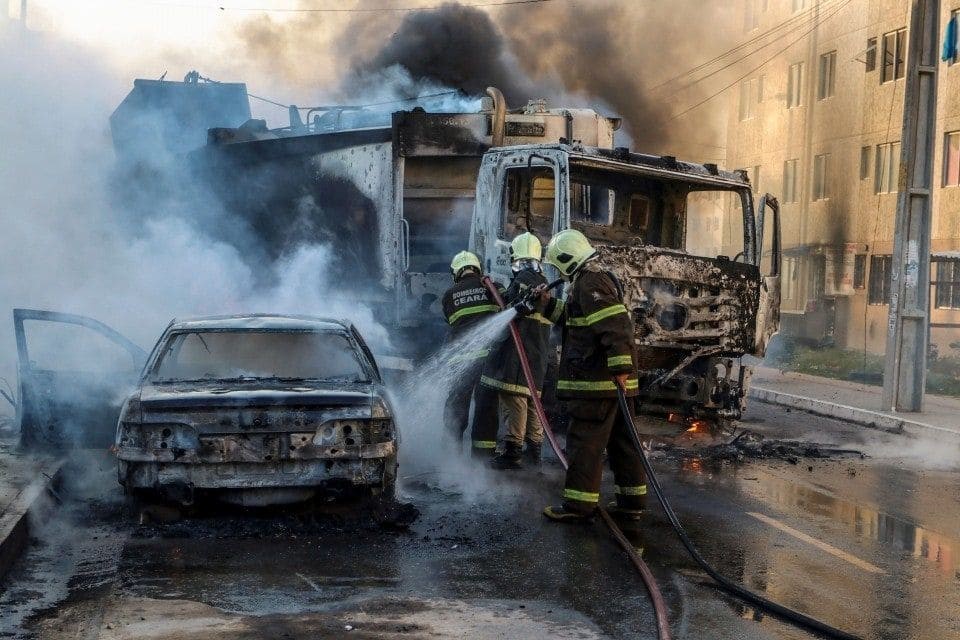
Source: The Washington Post/Alex Gomes/AP
Author: Cameron Cassar
The newly elected right wing president of Brazil, Jair Bolsonaro, had just been newly inaugurated when he had to deal with his first security crisis; terrorism attacks led by prison gangs in the Brazilian state of Ceara. The attacks have been centered on the capital of Ceara, Fortaleza, which is a metropolitan home to about 4 million Brazilians. These attacks have destroyed homes, businesses, modes of transportation, and has left many residents stuck in their homes due to threats of violence.
All of these attacks have been motivated by a desire to get the Brazilian government to end the practice of segregating gang factions in the Brazilian prison system. This goes completely against Bolsonaro and his ideologies. In fact, a major point of his political platform was that he vowed to enact strong policies to combat crime in Brazil. These policies include military takeovers in crime ridden Brazilian cities and shoot to kill policies for violent criminals.
This current wave of violence in Brazil shares many similarities to the wave of violence led by Pablo Escobar and the Medellin Cartel during their reign of narcoterrorism in Colombia. However, while the Brazilian prison gangs have opted to mainly use violence, the Medellin Cartel not only committed violence to instill fear in lawmakers in Colombia, but they also bribed police officers to turn a blind eye towards their criminal activities. Importantly, both of these organizations have used “violent lobbying” tactics to scare lawmakers into implementing policies that benefit them. Pablo Escobar wanted to get rid of extradition while the Brazilian gangs want to eliminate desegregation in prisons. The gang leaders want to end the prison reform which includes ending the separation of rival gang members and the blocking of cell phone service in the prisons.
These reforms would hinder the effect of the gang leaders who are locked up inside of the prison by disconnecting them from the outside world, which gives them the chance to coordinate their attacks. However, many gang leaders do not want desegregation in the prisons because they fear for their safety amongst the other prisoners who are often times rival gang members with a personal vendetta against one another. Incidentally, the violent lobbying of the gangs has united them in an unusual alliance due to the “common enemy”. The First Capital Command and the Red Command, two of the biggest gangs in the area have already formed a pact and there are plenty more that will be formed as the conflict ensues.
Brazil has the third highest prison population behind China and the US (of course). The problem is that President Bolsonaro wants to be even tougher on crime, which will result in even more Brazilians being sent to prison. Some of the policies he wants to implement include lowering the age of criminal responsibility from age 18 to age 16, which will only increase the number of Brazilians in the prison system. More Brazilians in the Brazilian prison system will not help reform the broken prison system. If anything, the country needs less prisoners so they can focus on improving the conditions in the prisons due to the overcrowding. The point of prison is to rehabilitate the prisoners so they can be reintegrated into society when they are released, but a prison in bad condition and ran by the prisoners instead of the guards is not suitable for rehabilitation.
President Bolsonaro must now deal with the crisis that has begun to unfold in his country. However, many members of the left saw this wave of terror coming. As Renato Roseno of the Socialism and Liberty Party stated, “This crisis was entirely predictable, we were sitting on a barrel of gunpowder and it just needed someone to light the fuse”. It is now up to him to decide if he will counter these actions, if he will send in foreign help, will peacekeeping troops be deployed, and will he still be able to stick to his tough on crime policy? It will be interesting to see how Bolsonaro deals with his first major crisis as a president. Will he be able to stick to his hard right policies or will he be pressured to renege on the promises that got him elected as president in the first place?
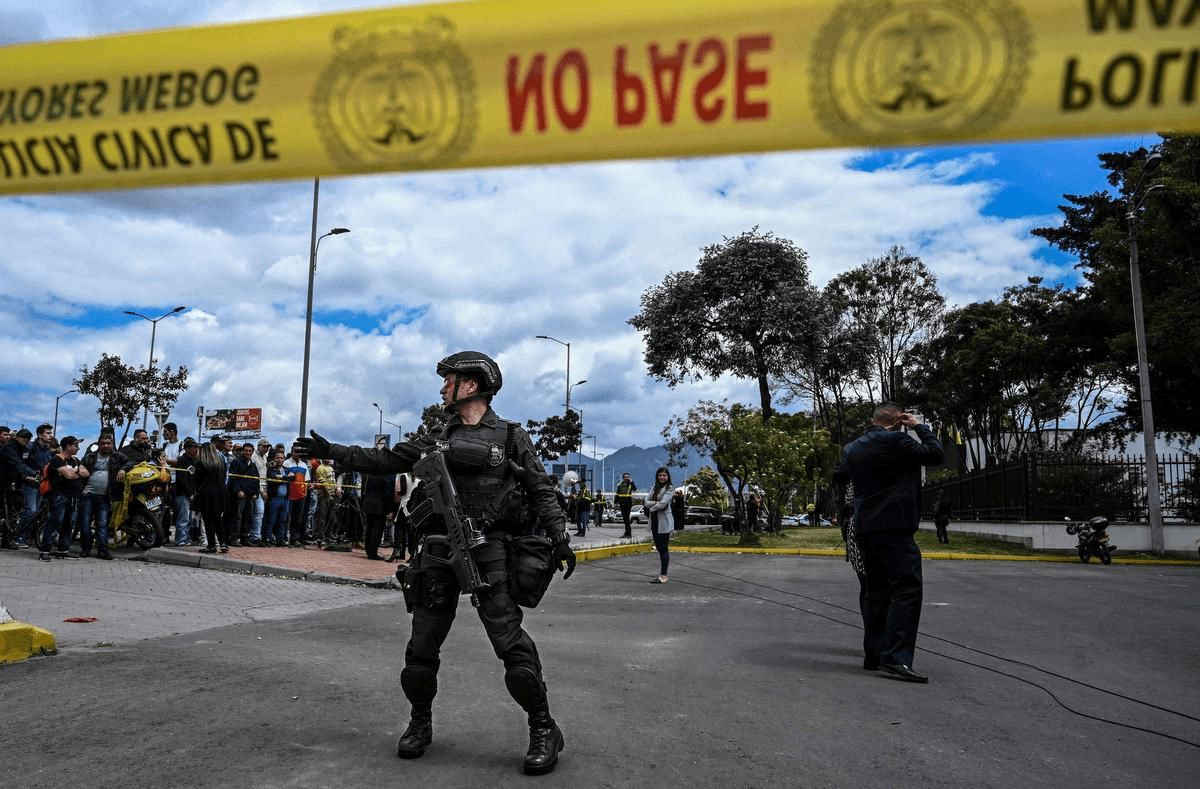
Source: The Tico Times (2019)
Author: Billy Baker
Colombia has a bloody history of political violence (La Violencia, FARC, ELN). But after the peace agreement with FARC (Revolutionary Armed Forces of Colombia) in 2016 and the peace talks with ELN (National Liberation Army), many thought that this would be the end of the bloodshed.
That was until January 17th, 2019, when a vehicle drove into the National Police Academy in Bogota, Colombia. The truck, armed with explosives, sped into the facility until hitting a wall. This triggered the detonation, killing 21 people (including the driver) and injuring 68 others. This marked the deadliest attack in 16 years.
Shortly after the bombing, ELN members in Colombia claimed responsibility for the attack. This has stalled peace talks currently being held in Cuba, although ELN chief negotiator, Pablo Beltran, has denied involvement in the attack. Colombian President Ivan Duque is now calling for the Cuban government to arrest and extradite the ELN negotiators in the country.
The Cuban government has responded by stating that they will follow the previously agreed protocol for a break in the dialogue. The protocol for this situation allows ELN negotiators to travel back to Colombia through Venezuela in a safe manner. It also requires the Colombian military not to engage any identified rebel strongholds for a 72-hour period during their return.
So what does this mean for the future? This single attack has damaged prospects for peace between ELN and the Colombian government, with the possibility of bringing back an escalation of widespread violence that Colombia has not experienced for years. This is unfortunately a possibility for a variety of reasons (low popularity for President Márquez, widespread disgust against ELN’s attack, need to respond to the attack).
It is necessary for the Colombian government to respond to the violence and crime that ELN has committed over the years. Along with the attack in Bogota, ELN has committed numerous attacks since peace talks began. Peace talks have proved difficult due to the group’s decentralized structure. This most recent attack by ELN has caused uncertainty about the future of political violence in Colombia.
Throughout the second half of the twentieth century, terrorist attacks occurred in countries that were hosting global events, including incidents at the Munich Olympics in 1972 and at the Atlanta games in 1996. Since then, the risk of violence and terrorist attacks have become a growing concern for nations hosting these high profile events as well as the international community attending the events. However, on the occasion of Brazil hosting both the 2014 Soccer World Cup and the 2016 Olympics in Rio de Janeiro, the context and the problems experienced by Brazil and most Latin American countries became evident.
During the Cold War, the vast majority of these countries were under brutal military dictatorships that oppressed the people and labeled every opposition group as terrorists, whether they were peaceful or not. Brazil was among the countries where opposition groups were labeled as terrorists for the simple act of opposing to the government; in many cases protesters were interrogated and tortured by military officers. As a result, following the democratization in 1985 and its consolidation four years afterward, the term terrorist was removed from the vocabulary of Brazilian leaders due to its strong connotation and alignment with the military dictatorship.
As Brazil prepared to host the two most popular events in the world, the World Cup and the Olympics, the international pressure for security was so strong that the country had to pass more extensive anti-terrorism legislation. President Dilma Rousseff, fought in a guerilla during the 1970s and 1980s, and her successor, Michel Temer, is of Arab origin, both common among Brazilians. This resulted in the Brazilian law being much broader and ambiguous than ones in other Western countries, leaving many organizers and security professionals related to the events unhappy.
The consensus at the time was that Brazil was not prepared for an attack the scale of Munich in 1972. As an example, Brazil focused its preparation on so-called lone wolves, which act alone rather than having a group or cell supporting and coordinating the attack. At the time of organizing these events, the Islamic State was publishing videos and statements in Portuguese, creating fears that it could be behind an attack during these events, while the eyes of the world would be fixed on Rio de Janeiro.
Another issue of concern as noted by the New York Times was that the Brazilian soldiers in charge of protecting the various event sites were not prepared to deal with various terrorist scenarios. Not only was the training to counter terrorist attacks or violent insurgency insufficient, but the soldiers and police officers were poorly paid and inadequately equipped, as the state lacked the financial support for basic supplies and equipment, such as gasoline for police cars.
Luckily, there were no terrorist attacks during the World Cup or during the 2016 Olympics. However, the problems remain, and the event highlighted the inability of the Brazilian government to properly respond to terrorist activity. In fact the same factors limiting efficacy for terror response actions such as insufficient training, lack of equipment, and poor pay, are also partly responsible for the high incidence of violence in Latin America. Thus, the region is unprepared to deal with terrorism and violent extremism, as well as to the day-to-day violence, with few resources invested in police which can counter violence, and even less devoted to tackling the issues that create and enable the rise of violence and drug trafficking. The World Cup and the Olympics exposed the lack of preparation and weakness of Brazil in terms of public safety, but until it becomes a priority for the state, nothing will change and Brazil will not be able to transcend its drug trafficking or homicide epidemics, let alone be prepared for a terrorist event.
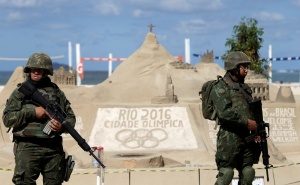
Brazilian Army Forces soldiers patrol on Copacabana beach ahead of the 2016 Rio Olympic games in Rio de Janeiro, Brazil, July 18, 2016. REUTERS/Ricardo Moraes
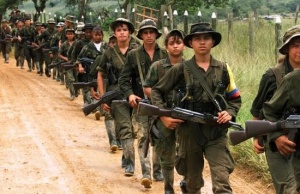
When a nation is invaded, or succumbs to an authoritarian government, its people usually are no match for either foreign or national military; these well trained troops would likely defeat them on a battlefield. However, as the road toward victory using conventional warfare is blocked, a side road featuring unconventional guerilla warfare can open. Many revolutions and resistance movements have used these side roads and more unconventional tactics to achieve great success. They paved the way for Yugoslavia’s President for almost the entirety of the Cold War, created chaos for the Colombian government, and even challenged the great military mastermind of Napoleon.
Guerrilla warfare, or unconventional war, occurs when a small group of combatants use military tactics such as sabotage, raids, landmines, and hit-and-run operations, to fight a traditional and often less mobile conventional army. Their aim is not only to kill enemy troops, but to attack the psyche and moral ensuring the enemy or oppressive government understands that they may occupy the territory, but they will not be able to control it. After they strike, guerrilla forces often go back to their hiding place, and wait for the next attack. This type of warfare is successful in irregular terrain, thick forests, caves, or hills which provide cover and places to hide.
Historically the tactic has been successful against more well-trained larger armies. The Roman Empire struggled with the hit and run tactics of Germanic Tribes, the Crusaders struggled against the lighter equipped mamelukes, and Napoleon suffered during the Peninsular War, between 1807 and 1814. More recently, during World War II the Nazis faced guerrilla tactics from local resistance in the Western Front, with an honorable mention to the French Resistance that was crucial for the operation of D-Day, and by Partisans in the Eastern Front, usually fighting against SS divisions. In more modern warfare, the Vietnam War quickly became an unconventional war between the U.S. and the Vietcong, and tribal guerilla combatants have successfully fought in Afghanistan against the Russians and more recently the U.S.
Latin America has been plagued by guerilla factions which challenge existing governments. In Mexico, these groups, such as the Zapatistas, affected the revolution; while in Brazil, guerrilla movements occurred throughout the 20th century, starting as early as the 1930’s in the so-called Coluna Prestes and continued with the Guerrilha do Araguaia, during the military dictatorship. More recently, the FARC guerillas in Colombia and the Sendero Luminoso in Peru, have shown the impact that small bands of unconventional troops can have on standing governments. The most successful, however, was the Cuban Revolution, led by Fidel Castro and Ernesto ‘Che’ Guevara.
In the Cuban Revolution, before the guerillas could properly engage in opposition to Fulgencio Batista’s oppressive regime, they went to Mexico to learn how to fight. It was in Mexico where Guevara joined Castro, and strengthened his movement. Although Guevara initially joined as the medic of the group, he played a key role in the eventual overthrow of Batista. Once the group concluded training, they want to Cuba and entrenched themselves in the mountainous region of the island, using radio as their primary propaganda tool and voice to the people, they waited for Batista’s army to come after them. Little by little, Castro and his fighters beat the regime’s armies and gained popular approval. A common misconception is that Castro’s regime was born a socialist, but that only occurred when the U.S. sent a guerrilla group formed by Cuban refugees that had fled when Castro took over and was decisively defeated in the Bay of Pigs.
While in other regions, bands of guerrillas are usually focused on foreign occupation, in Latin America the focus has been on government troops and oppression. This type of unconventional warfare is also related to socialist models, and more specifically, the Chinese model. One of the reasons why this approach has failed to inflict definitive change in Latin America is that they target the wrong population by focusing on peasants rather than urban dwellers, or the proletariat, as Latin American societies have a radically different organization to the Chinese ones, based on rural peasants.
Guerillas are much like terrorist organizations. Repression and counter-conflict may work to disband them in the short term, but it does not address the reasons why these groups are formed. In Latin America, like many other places in the world social unrest is caused by the marginalization, corruption, and lack of opportunities for people. Guerilla warfare has many parallels to terrorism including tactics and outcomes. In theory, guerilla warfare does not involve civilians, and is focused on groups of paramilitary individuals fighting another military group. Civilians may get caught in the cross-fire, but they are generally not the targets. In fact, many governments will not violate the Rule of Discrimination, by killing civilians together with guerrilla fighters, thus when they hide out in civilian areas, it is difficult for the government to retaliate. While terrorists have less regard for the distinction of civilian and military, and in fact often engage with or met out their violence against civilian targets. Despite this distinction, the outcome is often the same, communities engulfed in violence. While guerillas often seek to protect and be protected by the community, terrorists direct their efforts on expelling an enemy. In Latin America, the guerillas have traditionally sided with the common people in hopes of greater opportunities, and thus it is imperative that governments understand the distinction and work with these guerrillas to create a more peaceful and just society in the Latin American countries.
“Violent extremism knows no boundaries.” That was the message that Rise to Peace founder Ahmad Mohibi used to open “How to Counter Violent Extremism,” the latest Rise to Peace panel discussion, which took place this Tuesday at the Elliott School of International Affairs. With that in mind, the panelists – Leanne Erdberg, U.S. Institute of Peace; Jesse Morton, Parallel Networks; and Edward Burkhalter, U.S. Department of State – offered their perspectives on the best ways to counter violent extremism.
The panel’s first challenge was defining extremism and terrorism. Leanne Erdberg offered a legal definition: terrorism is limited to action, while extremism also includes violent thoughts. Jesse Morton focused on the definition’s practical implications. Terrorists, he poses, are cemented in their action, and thus countering terrorism is necessarily catching and punishing those who commit violent acts. An extremist is undergoing a cognitive radicalization process and can pulled away from extremist movements. Counterterrorism, he says, is the realm of law enforcement, but CVE is more complicated, and requires the engagement of more stakeholders.
Conversation then moved to how the problem of extremism has grown. Jesse Morton observed that mainstream media informs social media radicalization. For example, Islamophobic narratives in news media fuels polarization narratives used by radicalizers online. In a similar vein, Edward Burkhalter noted that A 24-hour news cycle can make problems seem more severe than they really are, and it is important to focus discussion on proven research.
Panelists then discussed the shortcomings of past efforts to curtail violent extremism. Jesse Morton provided historical background by discussing the roots of the “hearts and minds” in marketing campaigns and advertising.
Leanne Erdberg built on this theme by questioning the framing of programs and success in general. She argues that CVE that operates within an advertising scheme, which treats the communities they serve as an audience rather than giving them agency over the process. Programs that abandon that approach and instead emphasize people taking their future into their own hands are more empowering and more successful.
Ahmad Mohibi discussed CVE shortcomings in the context of Afghanistan. He said that CVE is impossible without trust, and in Afghanistan the trust between the Afghan and American government and the Afghan people is lacking. As long as people feel disconnected and distrustful of their leaders, extremism will continue. Edward Burkhalter provided a U.S. government perspective, acknowledging the futility of trying to improve a community without consulting its members. He elaborated, saying that the U.S. tries to follow a “do no harm” approach, and be sure that CVE or development efforts do not have unintended consequences. The only way to accomplish that is by relying on local partners.
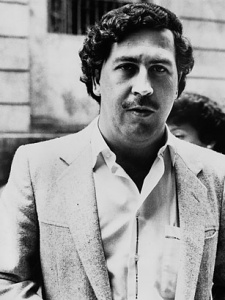
Pablo Escobar, the infamous Colombian drug trafficker with ties to the Mafia.
For decades, books, movies, and other media have secured audiences by recounting the Mafia’s global influence and detailing the scope of illegal activities, including human trafficking, money laundering, and the drug trade. Despite many fictionalized accounts, the Mafia continues to create very real conflict and engage in global acts of violence. Of particular interest is the Mafia’s involvement in the highly lucrative Latin American drug trade.
Ties between the Sicilian Mafia and Colombian drug cartels have been suspected for years, with one FBI informant, Antonino Giuffre, linking the Sicilian Mafia to Pablo Escobar. Giuffre, the former right-hand man to the chief of the Sicilian Mafia, leaked to the Italian press that the two groups had close relations. He detailed how the Cosa Nostra advised Escobar’s Medellin Cartel on military tactics and business practices for expanding the drug business and related criminal activity.
Escobar sent drugs to Sicily in exchange for advice. These drugs were forwarded to the American Mafia, which would exchange them for weapons and money. This created an efficient and highly prosperous global supply chain that was hard to track. Although Escobar was a cocaine dealer, he was adept at winning over locals by building schools, soccer fields, and hospitals. Despite that he ruled with an iron fist, he was often bolstered by the local community. Many poor people saw Escobar as helping their community; he seemed to serve their urgent needs better than the government.
Mexico has borne witness to an increasingly bloody drug war. It has escalated violence in areas cartel controlled areas. The cartels’ influence is strengthened in opposition to the government. Two of the most prominent Mexican groups, the Zetas and the Drug Cartel, do business with one of the most influential Mafia organizations, the ‘Ndrangheta, which has connections to the New York and Calabria Mafia. As demand for cocaine and heroin in Europe increases, the Mafia turns to Mexican cartels for a steady stream of drugs. The ‘Ndrangheta has been successful at engaging directly with local growers and producers, eliminating intermediaries, and selling directly to the European market. Increasing pressure from the U.S. Drug Enforcement Agency and Mexican and Italian police forces are limiting some supply routes, cleaving the supply chain. This disruption to the cross-Atlantic drug trade is putting pressure on the Mafia and the cartels who are looking for new ways to reinforce existing channels of distribution and create new ones.
As is the idea that drugs are a Latin American problem. The Mafia’s violent impact can be felt in Mexico, Italy, the U.S., the Netherlands, and Honduras. With such a strong global reach and vast financial resources, it will take international cooperation across law enforcement agencies to curb the Mafia’s violent influence and the drug trade. In the Maxi trial, authorities helped judges Falcone and Borsellino obtain evidence in other countries to locate individuals and follow the fiscal chain as they created a strong case to charge the criminals. This level of cooperation is critical for curbing the global drug trade. In addition to international law enforcement agency cooperation, a more robust legal framework that provides better enforcement and transparency will be beneficial.
Italian law enforcement authorities continue to support these international initiatives and believe they will not only help in terms of information sharing but also in combatting corruption in the supply chain and enforcement agencies as transparency and accountability are increased. This has been evident in the cooperation between the US, Colombia, and Mexico and their ability to identify, track, and prosecute drug traffickers. Finally, countries that suffer from drug violence can be incentivized to invest in community-based approaches, including better training and pay of police officers and development of community resources such as schools and hospitals, so neighborhoods are not forced to rely on cartel funding.
Roberto Malta is a Brazilian born, George Mason University student pursuing a B.A. in Global Affairs, with minors in History and Economics
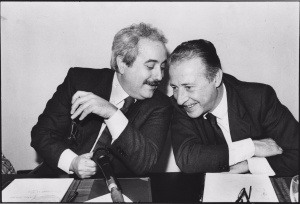
Giovanni Falcone and Paolo Borsellini, Italian judges responsible for the Maxi Trails vs. the Mafia. (Wiki)
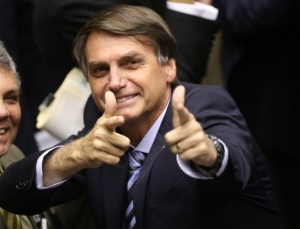
Jair Bolsonaro – Brazil’s recently elected president. (Credit AP)
Bolsonaro has been described by the New York Times as the most extreme leader to ever have been elected in Latin America history. Bolsonaro has expressed radical views towards minorities, he is in favor of the war on drugs, and has promised to facilitate easier access to guns to create a vigilantism system. Bolsonaro’s populist bid gave him the support of more than half of Brazilian electors who were fed up with high rates of criminality, corruption scandals, and deep economic recessions.
But how does the election of Bolsonaro relate to violent extremism? Brazil’s main cities, Sao Paulo and Rio de Janeiro, have extremely high rates of criminality, including over sixty thousand murders yearly nationwide. Drug trafficking is also common, as these factions benefit from the absence of the state to create their own institutions and support the marginalized sectors of the Brazilian population. Some of the dominant gangs include the Comando Vermelho, in Rio de Janeiro, and the Primeiro Comando da Capital, in Sao Paulo. Many incursions have been organized in the past against them by the state or federal government, using the regular police, elite officers (such as the BOPE or ROTA), and even the Army. In other stances, the state has negotiated a truce with the drug traffickers to host events, such as the World Cup and the Olympic Games, or to win an election, such as when Lionel Brizola allied itself with drug traffickers of Rio de Janeiro.
Bolsonaro has spoken frequently against the decriminalization of drugs, even though he argued his government would tolerate the medicinal use of marijuana. Bolsonaro, as a former Army Captain, is in favor of a more aggressive approach by the police with one of his most popular quotes being, “A good criminal is a dead one”. Bolsonaro has also, both in the past and during the campaign trail, defended torture and killing by the armed forces to fight drug traffickers, insurgents, and even politicians. In 1999, he called for the death of Congress and the then president Fernando Henrique Cardoso.
Brazil has suffered for many years from drug traffickers and the failure of the state to tend to the more marginalized sectors of society, including afro-Brazilians and the poorer parts of the population. On a previous piece, it was discussed how this problem led to the torture and death of investigative journalist Tim Lopes. Most politicians have approached this problem with violence and armed counter-attacks. Some Brazilian cities have had success focusing on the community, improving the police training to tackle this issue, and investing in education. Now, with the election of Bolsonaro, these improvements are likely to be in jeopardy, as a national policy based on criminalization and the war on drugs is likely to be created.
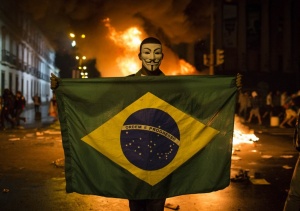
Brazilian protests against corruption and violence (Credit AP)
Bolsonaro is undoubtedly a populist leader who propagates authoritarian notions. His actions are likely to be disastrous for the country and only produce more violence. It is imperative that the international community condemns any attempts of Bolsonaro to exacerbate the failing War on Drugs. Moreover, the Brazilian governors and mayors must be even more assertive on investing in community-based approaches, police training, and education to effectively reduce criminality and drug trafficking.
~ Roberto Malta is a Brazilian born, George Mason University student pursuing a B.A. in Global Affairs, with minors in History and Economics.
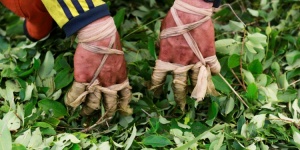
BusinessInsider.com The wrapped fingers of a raspachin worker who collects coca leaves, during the harvest on a small coca farm in Guaviare province, Colombia. REUTERS/John Vizcaino
For the past century, Colombia has been embroiled in an intense war on drugs which has created a steady state of violent conflict within the country, and little impact on long-term production or drug use. This war has largely been financed by the United States. Complicating the drug war is another long-standing conflict with leftist guerrillas who have control of territory with a high density of coca plants. This piece will focus on the problems of the Colombian approach to the war on drugs and how it can be adapted into more workable solutions in the future.
They supplied 80% of the global cocaine market. Much of the demand for cocaine came from the U.S., prompting the U.S. government and Drug Enforcement Administration (DEA) to take action. They then sent money, supplies, and even agents to Colombia as a way to disrupt the drug production, and distribution to North America. Through a long and bloody process, which included murder, arrests, and extradition requests, the DEA and Colombian government were able to dismantle the drug cartels in Colombia.
Unfortunately, this only partially resolved the sourcing issue and did nothing to address the demand issue. While the DEA and Colombian government were able to curb the cartels’ flow of drugs from Colombia to the U.S., other sources stepped in and continued the supply. Thus, the actions of the DEA did nothing to address the demand for cocaine in the U.S. The DEA and Colombian government were also ineffective in transitioning out of the drug war and providing an environment in which those previously involved in the drug trade could otherwise make a living. There were many promises by the Colombian government to help the farmers replace their coca crops with legal commodities, unfortunately, the help never came. The government failed to adequately support these farmers with seeds and other farming assistance, so the farmers quickly went back to cultivating the coca crops. The farmers needed to support their families, and no alternatives were offered. An example of that is Wilmer Ovalle, a young man that is taking over his father’s coca cultivation in the absence of state support for other crops. Ovalle knows that with the coca crop he will have a steady income and the drug trade will go on, even if large cartels have been broken up. (https://www.theguardian.com/world/2016/apr/18/colombia-united-nations-assembly-war-on-drugs)
Similar to the violent oppression of the cartels, the spraying forced the growers to adapt, and many moved deeper into territory controlled by the guerrillas. Ovalle’s father moved their family plantations to Colombian natural reserves, where the fumigations were prohibited. The farmers cut down trees and planted their coca in the Colombian tropical forest, exacerbating deforestation issues.
There was a glimmer of hope for Colombia with the accession to power of Juan Manuel Santos, who promised a more community-based approach to the drug war, as well as signing a peace deal with the FARC guerrillas, which includes a workable, sustainable solution to the illicit drug business. However, like too many things in Colombia, the policy rhetoric often differs from practice and implementation, thus the war on drugs continues. With the political damage following the failures of the FARC peace deal, Santos had to leave office and was replaced by his opposition.
One which helps farmers shift their production from coca to food and other crops which are profitable. The government needs to help the farmers make the transition as part of a post-conflict solution which places farmers at the center of the solution. Historically, farmers have shown willingness to cooperate, as they are concerned with the violence perpetuated by illicit drug trade as well as health impacts of coca farming. However, the government must show the political will to follow through and help the farmers. This might require farming support, subsidies, or tax incentives until the farmers are able to produce a significant yield of legal crops which can support their families and communities. The international community must also act to condemn the war on drugs, assist with community-based post-conflict practices, and look for other sustainable solutions to this conflict. The war on drugs failed miserably for both Colombia and the U.S., as production rates and prices for coca remain strong, as does drug use in the U.S.
~ Roberto Malta is a Brazilian born, George Mason University student pursuing a B.A. in Global Affairs, with minors in History and Economics
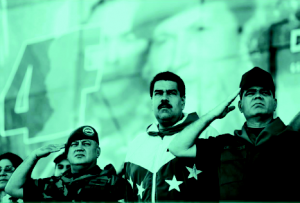
Prensa Miraflores, The New Politics Papers, Transnational Institute’s Public Alternatives Project
At the same time, it’s important to avoid reducing the current crisis to solely external factors. Many elements thereof are indeed purely Venezuelan and have contributed to one of the harshest crises Latin America has ever seen. Which, in itself, speaks to the situation’s severity.
Venezuela is no exception to the rule. As many of Latin America countries opened their economies to capitalism after World War II, and in the context of the Cold War, it exacerbated preexisting inequalities, especially as foreign investment arrived without proper democratic institutions to provide balance. As a result, this led to social unrest and to the arrival of political insurgencies, which were violently repressed by the Venezuelan dictatorship in the middle of the 20th century. Despite that this movement failed, it changed values in the country to be more left-leaning, anti-capitalist, and fearful of foreign investment, which was only seen as benefitting the country’s elites.
Venezuela was blessed with a huge amount of oil, arguably the most coveted resource in the wake of the second industrial revolution in the late 19th century. However, instead of using it to jump-start its industrialization like the United States, or save it, like Norway, for strategic purposes, Venezuela became a rentier state. Rentier states are those which have an abundance of valuable natural resources, like oil, which they sell in the foreign markets for huge profits.
These use part of the profits they make from exporting natural resources to provide welfare services to their population, all with extremely low taxes. As a result, any social unrest an authoritarian state might normally provoke is suppressed by the low taxation and decent state services. In addition, the state uses its profits to develop oppressive apparatuses to crush opposition that may rise against it, maintaining the status quo, and not industrializing.
Saudi Arabia is a prime example as it provides services to its population, even giving away money, all while repressing its opposition and making few efforts to develop its domestic economy. It also explains the sudden collapse of Venezuela’s economy when the price of oil dropped from $100 per barrel in 2014 to less than $40 per barrel in 2016. As the commodity financed the whole Venezuelan economy, the collapse was inevitable.
When a rentier state is unable to provide services it used to provide, social unrest rises and the state must take measures to contain it, increasing state repression and brutality, often coupled with disastrous economic policies that freeze prices and the supply of goods and services requisite to the wellbeing of its population. Not long thereafter the main worry for the population shifts from daily crime and insurgency groups to state oppression and violence.
They engage in the oppression of their populations and are often responsible for state-sponsored terrorism on a global scale. Even when they focus on internal repression, it usually resembles a Robespierrian terror rule. These states are dangerous to their populations, to other states, and they finance global terror worldwide – Iran is a chief example. Their racket, providing welfare-like services to the populace without taxation is susceptible to failure and can plunge nations into chaos, as seen in Venezuela, and even civil war.
It could facilitate their entrance into international organizations, incentivizing development and domestic, industrialization of their economies, facilitating entrance into the global economy, and intervening, with sanctions on the UN Security Council, for example, to stop such states from terrorizing their populations. Thus, not only will this halt worldwide human rights violations, it will increase rentier states’ accountability to their populations, reducing their ability and incentive to fund terror organizations.
~ Roberto Malta is a Brazilian born, George Mason University student pursuing a B.A. in Global Affairs, with minors in History and Economics